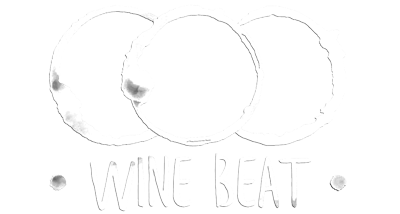Listen To The Podcast Here:
Muscadet from Sèvre-et-Maine is a thrilling wine with a range of expressions that riff off the bright acidic backbone, minerality and lemon flavours of the Melon de Bourgogne grape. Winemakers here use sur lie aging techniques as well as vineyard specific wine lots to layer complexity over the raw material of the Muscadet grapes. These are fascinating wines alive with character.
Pierre-Henri Gadais: Winemaker for his family’s estate and also for his own project Domaine de la Combe
Pierre-Henri Gadais is the gifted winemaker of Gadais Pere et Fils and Domaine de la Combe estates in Sèvre-et-Maine. We visited with him at his winery in St. Fiacre, the heart of Sèvre-et-Maine. He has a very focussed determination to use his new project, the estate called Domaine de la Combe, to pursue pure terroir wines. Pierre-Henri uses organic principles and non-interventionist winemaking to draw out the unique character of his vineyards. The vineyards have a multitude of different soils, slopes and aspects. As such, Pierre-Henri has an ample vineyard palate to work with. And among his tools are sur lie maturation (aging with the wine in contact with the yeast lees) and the different fermentation and aging vessels he uses.

The Sub-Regions of Muscadet
There are three sub-regions within Muscadet: Sèvre-et-Maine (located between the two rivers with these names), Coteaux de la Loire and Cotes de Grandlieu. Of these regions, Sèvre-et-Maine is by far the largest and is the source of most wines you will find in the export market. In addition, this is the region that is producing the particularly elegant sur lie style of Muscadet.
The Regulations for Sur Lie Aging
In order to be labelled as “sur lie” Muscadet from Sèvre-et-Maine must spend an entire winter on the lees before being bottled, typically in March to May. There are also wines with longer aging sur lie but by regulation the maximum time on the lees is 14 months. Any kind of fermentation vessel can be used and still qualify for classification under the rules. In the case of Domaine de la Combe Pierre-Henri uses mostly concrete tanks lined with glass tiles. These tanks are embedded in the ground to take advantage of natural cooling. Pierre-Henri is also using large oak puncheons for his new “cru” wine from single vineyards. In order to qualify as a “cru” wine the sur lie aging must be for a minimum of 24 months. By comparison, at the Gadais Pere et Fils estate the aging of the wines is done in stainless steel tanks.

Vineyard Plot Expressions
One of the hallmarks of Pierre-Henri’s winemaking is his application of organic practices and his non-interventionist approach to winemaking. But perhaps more than this, Pierre-Henri is obsessively focused on soils and vineyard plot characteristics. He produces individual lots of wines that express the granite, schist or gneiss soils. He also produces lots that reflect the different plots and their individual slopes, aspects and row orientations. When you visit the vineyards of Domaine de la Combe you can see the tremendous variety of individual plots that the valley is able to create.


La Grenouille de Domaine de la Combe
The sculpture below is the mascot or emblem for Domaine de la Combe. It was left behind by the previous owner because it was too large and heavy to move easily. It became a gift for Pierre-Henri and now symbolizes his winery.

Pierre-Henri in the Press
Pierre-Henri is being recognized as a force within the winemaking community of Sèvre-et-Maine and one of Muscadet’s stars. His attention to detail, professionalism and passion are helping to bring Muscadet’s reputation to where it should be: a serious and delicious wine!


More Great Content
Jackie Blot And The Re-Invention of Chenin Blanc – Companion Podcast
The Chinon Wines of Domaine Bernard Baudry with Matthieu Baudry – Companion Podcast
Château de Targé with Paul Pisani-Ferry in Saumur – Companion Podcast
Find other great content on the Loire Valley and Sèvre-et-Maine on The Wine Beat Website!
